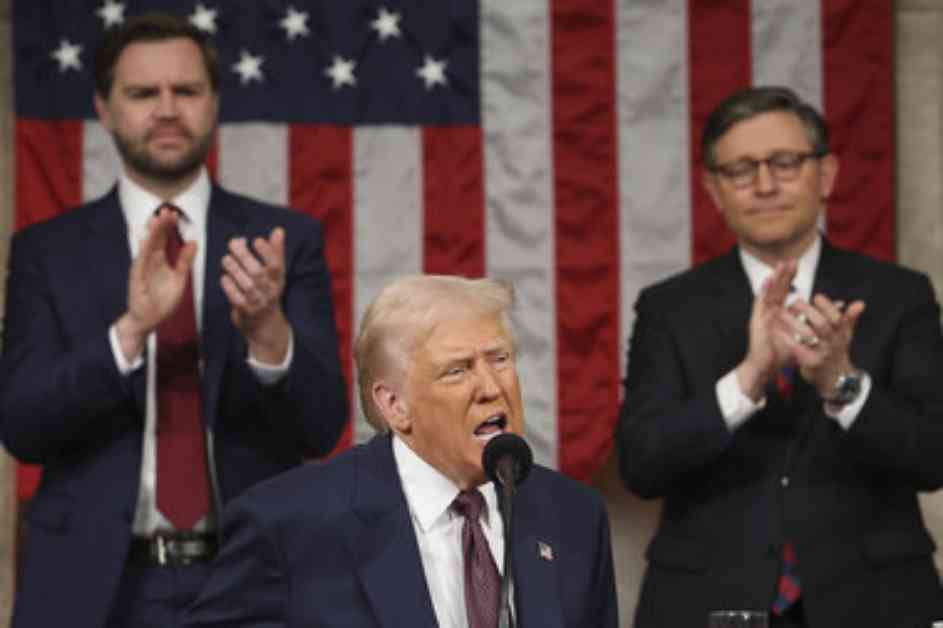President Donald Trump, in his first address to Congress since returning to the White House, made a bold statement about the swift and unrelenting changes he has implemented in a mere 43 days. The speech highlighted a tumultuous period in American history, marked by unconventional moves and significant actions that have already reshaped the political landscape.
Tariffs and Economic Impact
During his address, President Trump defended his tariff plan, attributing it to the vision of making America rich and great again. Despite acknowledging the potential short-term economic disruptions, he remained confident in the long-term benefits of the tariffs. The President’s decision to implement wider reciprocal tariffs on April 2 stirred anticipation and apprehension among lawmakers and market analysts alike.
The acrimony in the room was evident as President Trump confronted his predecessor, former President Joe Biden, accusing him of causing high inflation. The tension escalated when Democratic Rep. Al Green of Texas, in a dramatic moment, protested against potential cuts to Medicaid, disrupting the proceedings. The clash between opposing parties underscored the deep-seated divisions that still dominate the political arena.
Partisan Dynamics and Presidential Rhetoric
President Trump’s address was punctuated by partisan jabs and rhetorical flourishes, designed to provoke reactions from his critics. The President took aim at Democrats, highlighting his electoral victory in 2024 and reigniting past controversies. He strategically incorporated emotional moments, such as honoring a 13-year-old cancer patient as an honorary U.S. Secret Service agent, to create poignant television scenes.
The Democrats, in response, attempted to challenge President Trump’s assertions but struggled to present a cohesive counter-narrative. The disjointed pushback from the opposition underscored the challenges of navigating a political landscape dominated by polarizing figures and conflicting ideologies. Senator Elizabeth Warren’s sardonic clapping and subsequent criticism of the President’s speech exemplified the Democrats’ struggle to effectively counter his rhetoric.
A Long and Contentious Evening
President Trump’s address to Congress stretched nearly 100 minutes, making it the longest joint session or State of the Union in modern history. The President relished the spotlight, taking his time to assert his agenda and rally his supporters. Despite the late hour, the endurance of the audience was tested as the tension in the chamber continued to escalate.
As the night drew to a close, Michigan Democratic Senator Elissa Slotkin humorously acknowledged the length of President Trump’s speech, promising a more concise response. The dramatic conclusion of the evening reflected the intensity and polarization that have come to define American politics in the wake of President Trump’s return to office.
In conclusion, President Donald Trump’s address to Congress served as a microcosm of the current political landscape, characterized by division, controversy, and strategic posturing. The speech, while lacking in lasting policy impact, showcased the President’s ability to command attention and provoke strong reactions from both supporters and detractors. The aftermath of the address will undoubtedly shape the trajectory of President Trump’s political future and the broader direction of the country.

